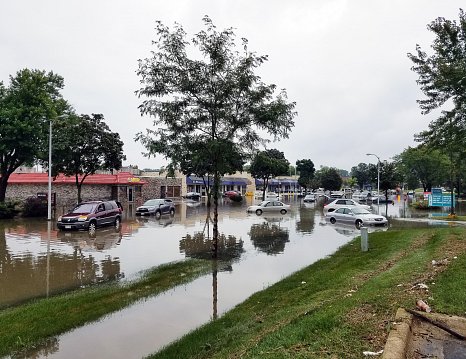Understanding The True Danger Of Mold
Is Mold Dangerous even when it’s “Dead”?

The Centers for Disease Control and Prevention report just how dangerous mold is for human health. Their evidence cites The Institute of Medicine which has found clear connections between indoor mold exposure and upper respiratory tract symptoms even in usually healthy people. Mold is more dangerous for people in vulnerable groups but exposure can be harmful to anybody and cleaning and removing mold properly is essential for a healthy home or work environment. There have been many myths circulated about “killing” or “destabilizing” mold but in both instances, it is not guaranteed the hazard is removed. Dead mold does exist and while it will not grow, it is still a considerable health hazard and should be removed.
What are Molds?
Molds are organisms which are found both indoors and outdoors. They occur naturally and play a valuable role in the environment as they break down and digest organic materials such as leaves and branches. Molds multiply quickly by the production of spores. Spores are like the seeds of the mold and they can be airborne and travel very quickly, causing the mold to spread dramatically. Mold is not a problem in most indoor environment, unless mold spores are able to land, develop and multiply in damp or wet areas. Unchecked mold can become a real problem as it can result in: • Rotting wood and timber within the home • Damaging the drywall • Damaging building and furnishing • Breaking down the structure of a building • Cause stains and patches of damp to expand As already mentioned, mold is a real hazard and risk to human health so needs to be dealt with quickly and effectively.
Dead Mold and the Spread of Spores
When mold begins to die, it sheds its spores as a way of spreading and ensuring it continues to flourish. Allergic reactions can be caused by both spores, mold growth and dead mold. It is the “shell” of the spores which is the allergen for sufferers, and this remains present in all of the previously mentioned circumstances. Spores are also extremely resilience, so best practice is to kill mold but also remove it fully to prevent the risk of allergic reactions and other health issues. Mold removal can be achieved by scrubbing and cleaning in some instances, such as when it grows on soft furnishings or walls. However, when it penetrates a surface entirely, such as through drywall or carpet, disposal is the best option.
Cleaning is Not Enough for Mold Removal
Spraying, bleaching and even the gassing of mold does not remove it entirely. It is impossible to kill every single spore in any kind of cleaning process, so the mold is never truly, 100% dead. This is why removal is essential and working with specialists who know exactly how to effectively clean and remove mold is recommended. Using highly concentrated levels of chemicals is more likely to damage your surface or building than it is to destroy every potentially toxic spore. At Penn Jersey we focus on greener and more eco-friendly approaches to cleaning too, helping to minimize chemical use in all our work.
Identifying and Removals all Mold and Mold Reservoirs
All mold and mold reservoirs have to be completely removed for a building to be considered completely safe. Removing mold without professional help can mean you simply focus on the visible mold, for example mold present on the surface, or on the outer layers or wood or another structure. Often the extent of the mold is much further spread and it is important to look more comprehensively at the area around the “problem mold”. Visible mold is also not necessarily the most problematic mold in the building so a full and comprehensive check is essential. It is also recommended you look at other materials within the building which may be easily contaminated such as insulation.
Mold Cleaning and Removal
At Penn Jersey we are used to dealing with hazardous and potentially dangerous cleaning projects. This involves working in properties after severe water damage, flood and other instances where mold is a significant problem. Our team work to clean and remove mold creating a fully safe and hazard free environment, both in homes and business premises. We can put the right cleaning procedures in place for places where mold is more likely to return as well as work in emergency clean up situations where necessary.
Picture by Unsplash
